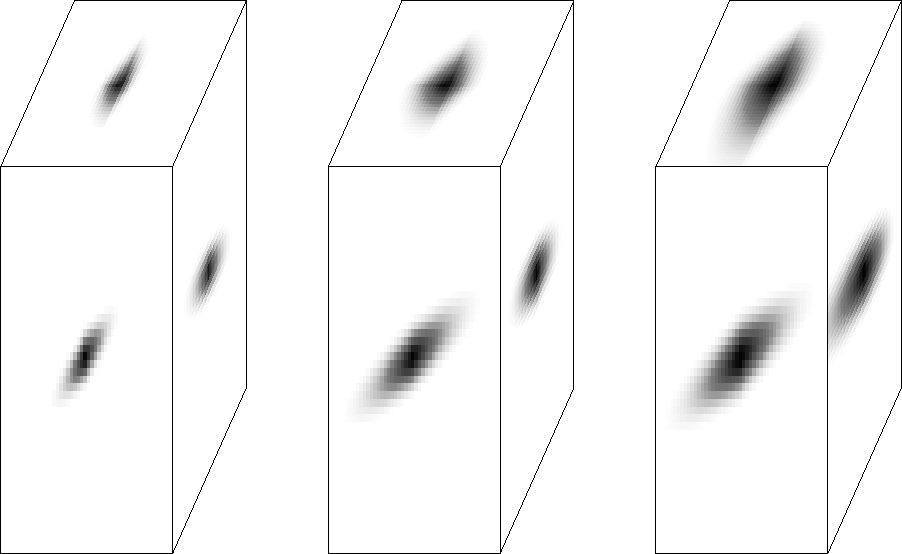




Next: Missing data example
Up: Methodology
Previous: 2-D steering filter
A 3-D dip annihilation filter can
be approximated by cascading two perpendicular 2-D filters,
one oriented in the x-z plane and the other oriented in the y-z plane.
We can write this new filter as
|  |
(2) |
where  is our inverse
3-D steering filter operator,
is our inverse
3-D steering filter operator,  is an inverse
steering filter oriented in the x-direction, and
is an inverse
steering filter oriented in the x-direction, and
 is an inverse y-direction
steering filter.
is an inverse y-direction
steering filter.
The construction of two 2-D filters allows for a large degree of freedom
in filter construction.
The method can deal with a range of spatial dips with little
variation in bandwidth response, Figure 1.
In addition we can vary the range over which the smoother operates,
both isotropically (Figure 2) and to some degree
anisotropically (Figure 3).
angles
Figure 1 An example of filter behavior
at different dip angles. Note how the bandwidth response is approximately
the same in all panels.




 iso
iso
Figure 2 By changing what the non-zero lag
coefficients sum to the area over which the filter acts can be drastically
altered.




 aniso
aniso
Figure 3 The cascading of two filters allows us
to create a filter that acts over different range in the x and y direction.










Next: Missing data example
Up: Methodology
Previous: 2-D steering filter
Stanford Exploration Project
9/5/2000


